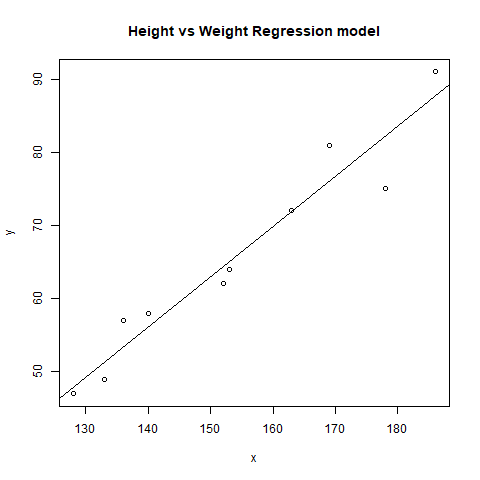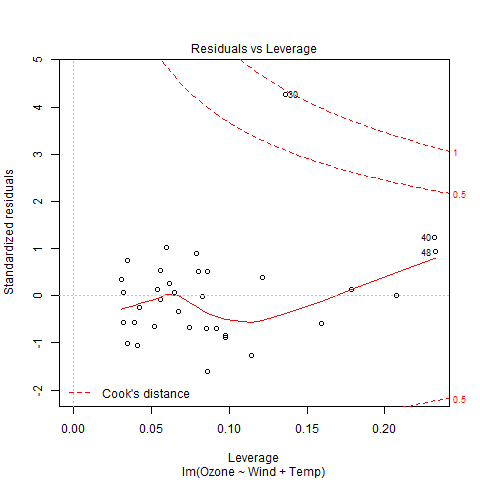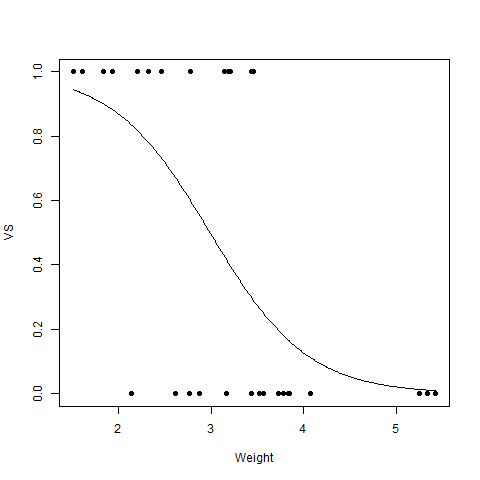回归分析是一种估算两个或多个变量之间关系的统计工具。总会有一个响应变量和一个或多个预测变量。回归分析被广泛用于相应地拟合数据, 并进一步预测数据以进行预测。它可以帮助企业和组织使用因变量/响应变量和自变量/预测变量来了解其产品在市场中的行为。在本文中, 让我们了解不同类型的回归R编程借助示例。
回归类型
R编程中主要有三种类型的回归被广泛使用。他们是:
- 线性回归
- 多重回归
- 逻辑回归
线性回归
线性回归模型是三种回归类型中广泛使用的模型之一。在线性回归中, 估计两个变量之间的关系, 即一个响应变量和一个预测变量。线性回归在图形上产生一条直线。数学上

其中, x表示预测变量或自变量y表示响应变量或因变量a和b为系数
在R中实施
在R程式设计中lm()函数用于创建线性回归模型。
语法:lm(公式)参数:公式:表示必须在其上拟合数据的公式要了解更多可选参数, 请在控制台中使用以下命令:help(" lm")
例子:
在此示例中, 让我们在图形上绘制线性回归线, 并根据身高预测体重。
# R program to illustrate
# Linear Regression
# Height vector
x <- c (153, 169, 140, 186, 128, 136, 178, 163, 152, 133)
# Weight vector
y <- c (64, 81, 58, 91, 47, 57, 75, 72, 62, 49)
# Create a linear regression model
model <- lm (y~x)
# Print regression model
print (model)
# Find the weight of a person
# With height 182
df <- data.frame (x = 182)
res <- predict (model, df)
cat ("\nPredicted value of a person
with height = 182")
print (res)
# Output to be present as PNG file
png (file = "linearRegGFG.png" )
# Plot
plot (x, y, main = "Height vs Weight
Regression model")
abline ( lm (y~x))
# Save the file.
dev.off ()输出如下:
Call:
lm(formula = y ~ x)
Coefficients:
(Intercept) x
-39.7137 0.6847
Predicted value of a person with height = 182
1
84.9098
多重回归
多元回归是回归分析技术的另一种类型, 它是线性回归模型的扩展, 因为它使用多个预测变量来创建模型。数学上

在R中实施
R编程中的多元回归使用相同的lm()函数来创建模型。
语法:lm(公式, 数据)参数:公式:表示必须在其上拟合数据的公式数据:表示必须在其上应用公式的数据框
例子:
让我们创建R基础包中存在的空气质量数据集的多元回归模型, 并将该模型绘制在图上。
# R program to illustrate
# Multiple Linear Regression
# Using airquality dataset
input <- airquality[1:50, c ( "Ozone" , "Wind" , "Temp" )]
# Create regression model
model <- lm (Ozone~Wind + Temp, data = input)
# Print the regression model
cat ( "Regression model:\n" )
print (model)
# Output to be present as PNG file
png (file = "multipleRegGFG.png" )
# Plot
plot (model)
# Save the file.
dev.off ()输出如下:
Regression model:
Call:
lm(formula = Ozone ~ Wind + Temp, data = input)
Coefficients:
(Intercept) Wind Temp
-58.239 -0.739 1.329
逻辑回归
Logistic回归是另一种广泛使用的回归分析技术, 可预测范围内的值。此外, 它用于预测分类数据的值。例如, 电子邮件既可以是垃圾邮件, 也可以是非垃圾邮件, 无论是赢家还是输家, 无论是男性还是女性, 等等。

其中, y表示响应变量z表示自变量或特征的方程
在R中实施
在R程式设计中glm()函数用于创建逻辑回归模型。
语法:glm(公式, 数据, 族)参数:公式:代表必须根据其拟合模型的公式数据:代表必须在其上应用公式的数据框家族:代表要使用的功能类型。 Logistic回归的"二项式"
例子:
# R program to illustrate
# Logistic Regression
# Using mtcars dataset
# To create the logistic model
model <- glm (formula = vs ~ wt, family = binomial, data = mtcars)
# Creating a range of wt values
x <- seq ( min (mtcars$wt), max (mtcars$wt), 0.01)
# Predict using weight
y <- predict (model, list (wt = x), type = "response" )
# Print model
print (model)
# Output to be present as PNG file
png (file = "LogRegGFG.png" )
# Plot
plot (mtcars$wt, mtcars$vs, pch = 16, xlab = "Weight" , ylab = "VS" )
lines (x, y)
# Saving the file
dev.off ()输出如下:
Call: glm(formula = vs ~ wt, family = binomial, data = mtcars)
Coefficients:
(Intercept) wt
5.715 -1.911
Degrees of Freedom: 31 Total (i.e. Null); 30 Residual
Null Deviance: 43.86
Residual Deviance: 31.37 AIC: 35.37

